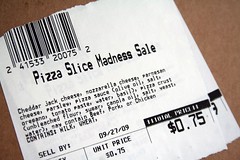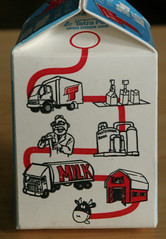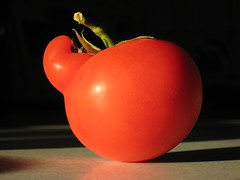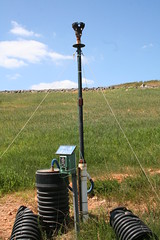I’ve been somewhat critical of Whole Foods on certain topics, so here’s an opportunity to give credit where credit’s due.
The other night I went there for a few slices of pizza, mostly because it was on sale for half-price during September. I hadn’t realized it, but it was pretty late.
I became aware of that fact when the server told  me that slices were two-for-one after 9 p.m. But he made my waste sensor even happier when he said another option was one slice for half-price (75 cents). Given the pizza sale, this meant that it’d be one-fourth of the usual (pricey) cost.
me that slices were two-for-one after 9 p.m. But he made my waste sensor even happier when he said another option was one slice for half-price (75 cents). Given the pizza sale, this meant that it’d be one-fourth of the usual (pricey) cost.
I’m praising Whole Foods is because they provide that choice. It’d be easy for them to stick with the buy one, get one offer because they’re looking to sell off their product by the end of the night. There’s no yesterday’s pizza for sale at Whole Foods or anywhere I’ve seen (even thought I’d be psyched if there was).
That’s why I’m even more appreciate that they offer the one slice, half-price option, as it doesn’t encourage overeating or waste. Of course, I plowed through two and considered a third, but that’s another story.
 Why is that? My sense is that composting is an easy change. It doesn’t ask much of us, other than an extra step or two at the bin. Reducing waste can be a bit harder. What’s your take?
Why is that? My sense is that composting is an easy change. It doesn’t ask much of us, other than an extra step or two at the bin. Reducing waste can be a bit harder. What’s your take?

 In addition, I could imagine adding some other vegetable odds and ends you’re looking to use up. Not to mention the fresh tomatoes, peppers and cucumbers that are entering the September of their years.
In addition, I could imagine adding some other vegetable odds and ends you’re looking to use up. Not to mention the fresh tomatoes, peppers and cucumbers that are entering the September of their years. The Telegraph brings us this
The Telegraph brings us this  My other reaction: It’s about time! Also, there’s some room for concern over how healthy these new donations will be, given
My other reaction: It’s about time! Also, there’s some room for concern over how healthy these new donations will be, given  Anyway, it was a twofer. The older part of the landfill, which is now closed, has “passive vents,” as pictured to the right. Essentially, that means engineers have dug holes and inserted pipes to facilitate the harmful methane’s escape into the atmosphere. Not exactly a progressive idea. It prevents landfill fires from gas buildup, but does nothing to address the environmental issues.
Anyway, it was a twofer. The older part of the landfill, which is now closed, has “passive vents,” as pictured to the right. Essentially, that means engineers have dug holes and inserted pipes to facilitate the harmful methane’s escape into the atmosphere. Not exactly a progressive idea. It prevents landfill fires from gas buildup, but does nothing to address the environmental issues. While that sounds terrible, it’s actually an improvement because methane is so much more harmful (21x) than carbon dioxide. Plus, it doesn’t produce new carbon because it already existed (in the food). Still, it’s not all that progressive, because it lets a potential energy source escape and the collection systems miss a sizable amount of methane.
While that sounds terrible, it’s actually an improvement because methane is so much more harmful (21x) than carbon dioxide. Plus, it doesn’t produce new carbon because it already existed (in the food). Still, it’s not all that progressive, because it lets a potential energy source escape and the collection systems miss a sizable amount of methane. but I’m still not wild about the
but I’m still not wild about the  If that is in fact, the widely held view, fine. I’m proud that the majority of Americans don’t need a celebrity chef to prompt them to take home food for which they’ve paid.
If that is in fact, the widely held view, fine. I’m proud that the majority of Americans don’t need a celebrity chef to prompt them to take home food for which they’ve paid.